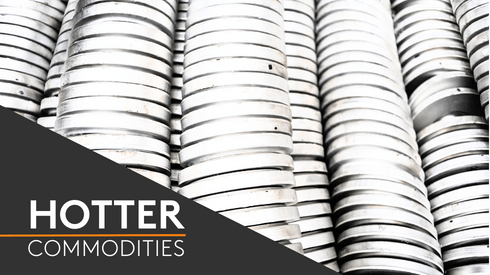“It is critical that the US International Trade Commission (ITC) collect scope 1, 2 and 3 data on all aluminum and steel products covered by [section] 232 on a cradle-to-gate basis,” Jeff Hansen, vice president of human resources, health and safety, and environmental sustainability at Steel Dynamics Inc, said at the hearing in Washington, DC.
Fellow steel producer Nucor echoed the sentiment, highlighting emissions generated from iron ore mining.
“The Commission should measure actual Scope 1, Scope 2 and significant Scope 3 emissions. Measuring all emissions associated with iron ore mining is critical. Mining-related emissions — like pelletizing — are a significant portion of the total embodied emissions of a steel product. Plus, mining is a key difference between integrated producers using blast furnaces and [electric-arc furnace] producers,” David Miracle, Nucor general manager of environmental affairs, testified.
The steelmaker established new carbon-intensity targets on November 13 to lower greenhouse gas (GHG) emissions by accelerating and expanding its scope of decarbonization.
Emissions are divided into three scopes: those directly produced by company (Scope 1), those indirectly generated from electricity or steam energy (Scope 2) and those from upstream and downstream partners in the supply chain (Scope 3). Scope 3 emissions have long been the most difficult to quantify, since they are usually emitted by third parties.
To combat that, domestic steelmakers have been focusing on collaborating with suppliers of scrap, iron, alloys and coal that are significant sources of GHGs to cut emissions, sources told Fastmarkets in September 2022.
Need for product-specific emissions accounting
Witnesses at the hearing also expressed a need for emissions to be measured at the product category level, pointing out limitations to current data sources.
Accounting the emissions intensity on a product-specific basis is needed to implement a carbon tariff system, Kevin Dempsey, president and chief executive officer the American Iron and Steel Institute (AISI), said.
“This is essential because there can be significant differences in emissions intensity across product types. The form and function of steel products vary widely and demand different mixes of raw material inputs — especially the percentage of ferrous scrap used, which directly correlate to emissions intensity,” Dempsey said.
There are restrictions to current emissions methodologies, steel producers said, highlighting the Environmental Protection Agency’s (EPA) Greenhouse Gas Reporting Program methodology.
The EPA method requires certain companies and sites located within the US that are significant emitters of greenhouse gasses to report their Scope 1 emissions, Jeffrey Becker, US Steel’s research consultant for sustainability and strategy, said at the hearing.
Becker added that the method can lead to “apples-to-oranges comparisons” among domestic mills and even within the same company.
“In the case of EPA’s mandatory reporting, it is not a product-specific intensity reporting methodology, and it does not include Scope 2 and material upstream Scope 3 data,” Patrick Bloom, VP of government relations at Cleveland-Cliffs, said.
Bloom explained: “Both EPA’s Scope 1 reporting and many voluntary emissions reporting methodologies aggregate emissions at the facility-level or company-level, and do not establish product category-level emissions figures.”
Specifically, accounting for the emissions from stainless steel products was highlighted, with witnesses explaining a disparity in emissions intensity compared with that of carbon steel.
The difference — due to the addition of ferro-alloys to obtain the preferred corrosion resistance and other physical properties — makes it essential for a separate accounting for stainless steel products, Dempsey said.
Camilla Kaplin, stainless steel producer Outokumpu’s head of sustainability data, further explained the significance of accounting for stainless steel.
“Stainless steel needs metallic alloying agents such as nickel and chromium to impart its essential characteristics. Failure to account for the emissions embodied in these materials, whether or not their extraction and processing is undertaken by the steel producer, would ignore up to two-thirds of a stainless steel product’s embodied emissions.”
Learn how the top steel companies are addressing Scope 3 emissions by optimizing their upstream value chain in our ultimate steelmaker’s guide to tackling Scope 3 emissions.






